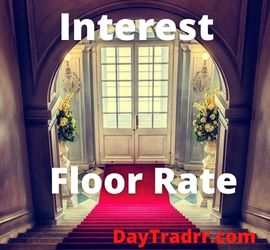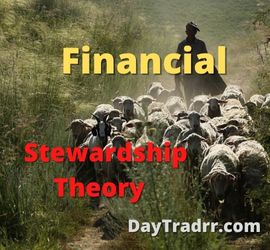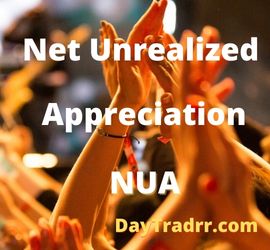What is Extrinsic Value in Options Trading?
 Extrinsic value in options trading is the difference between an option’s strike price and the underlying asset’s price. It is also referred to as the premium.
Extrinsic value in options trading is the difference between an option’s strike price and the underlying asset’s price. It is also referred to as the premium.
It is the portion of the worth that has been assigned to an option by factors other than the underlying asset’s price. The opposite of extrinsic value is intrinsic value, which is the inherent worth of an option. The extrinsic value rises with an increase in volatility in the market.
The extrinsic value of an option is calculated by taking the difference between the market price of an option (called the premium) and its intrinsic price – the value of an option’s contract in relation to the underlying at expiration or if exercised.
Extrinsic Value Basics
Extrinsic Value is also referred to as Time Value or Time Premium. It is the real cost of owning a stock options contract. It is the part of the price of an option which the writer of the option gets to keep. This amount is profit to the writer if the stock price remains stagnant all the way to expiration. In that case, extrinsic value is actually compensation to the writer of an option for undertaking the risk of writing an option. But, this part of the price of an option decreases as time goes by through the concept of Time Decay in options trading.
- The price of a stock option is comprised of two components – Extrinsic and Intrinsic Value.
- The intrinsic value of a stock option is the built-in value due to how much the option is in the money.
- The extrinsic value of a stock option is the extra money or premium you are paying above the intrinsic value in order to own that option.
- Options that are in-the-money contain both intrinsic value and extrinsic value.
- Out of the money options consist of only extrinsic value. They are options with no built-in value. This means that if the option remains out of the money, it will expire totally worthless. In that case, the writer of the option keeps the extrinsic amount you paid for the option as profit.
Example – Extrinsic Value vs Intrinsic
For example, consider a stock trading at $100 with a call option priced at $8.00 and a strike price of $95. The Call option allows its holder to purchase the stock at $95, even when the stock is trading at $100. Therefore, there is a $5.00 value built-in or intrinsic value. As such, out of the total price of $8.00 for the call option above, $5 is intrinsic value while $3.00 is extrinsic value.
From the above example, the extrinsic value of $3.00 is the actual price you are paying to the writer of the option. The option writer does not, at the point of sale, benefit from the intrinsic value at all. This is because the buyer has the right to immediately exercise the right in the option. The option buyer can purchase the stock from the writer of the call option at $95 when the stock is $100. So, the writer will lose that $5 intrinsic value through that transaction. But, the writer can keep the $3.00 extrinsic value ($8.00-$5.00 = $3.00).
To summarize, options that are in-the-money contain both intrinsic value and extrinsic value. Options that are out-of-the-money contain only extrinsic value. This is because there is no built-in value. So, all options have extrinsic value while only in the money options have intrinsic value. Therefore, buying options with only extrinsic value is like buying a lottery ticket. If the ticket doesn’t win, you lose whatever money you paid for the ticket. Similarly, if the stock does not move in your favor, the option will expire worthlessly. As a result, you lose the money you paid for the options contract and the writer keeps it as profit.
Factors Affecting Extrinsic Value
Extrinsic value is also known as time value because the time left until the option contract expires is one of the primary factors affecting the option premium. Under normal circumstances, a contract loses value as it approaches its expiration date because there is less time for the underlying security to move favorably. Another factor is implied volatility. It measures the amount an underlying asset may move over a specified period. If the implied volatility increases, the extrinsic value will increase.
- Length of the Contract – A contract generally loses value as it approaches its expiration date. This is because there is less time for the underlying security to move in favor of the holder. As a result, it is justifiable on the part of the holder to pay more in extrinsic value for options with longer expiration. For example, an option with one month to expiration that is out of the money will have a greater value than that of an out of the money option with one week to expiration.
- Implied Volatility – also known as vega, measures the amount an underlying asset may move over a specified period. When volatility is added to the time value, the extrinsic value of an option is obtained. If volatility in an underlying security increases, the extrinsic value of the option will also increase and vice-versa. For example, if an investor purchases a call option with an annualized implied volatility of 10% and the implied volatility increases to 35% the following day, the extrinsic value will increase.
Why are Extrinsic Values for Call and Put Options Different?
The values of call (right to buy) and put (right to sell) options of the same strike price – also known as the exercise price – are usually different. Even though a higher interest rate results in a higher extrinsic value for call options, it actually results in a lower extrinsic value for put options.
Intrinsic Value (Call Options) = Underlying Price – Strike Price
Intrinsic value (Put Options) = Strike Price – Underlying Price
Similarly, dividends decrease the value of call options. However, they increase the extrinsic value of put options due to the certainty that the stock will go down. Call and put options of the same stock usually have different extrinsic values. This is because a stock is going upwards or downwards. As a result, investors are buying more call options or put options. In that situation, the extrinsic value of that type of option increases due to increased trading. (Source: corporatefinanceinstitute)
Extrinsic Value Example
Assume a trader buys a put option on ABC stock. The stock is trading at $100, and the trader buys a put option with a strike price of $95 for $3. It expires in six months. At the time of purchase, that option has no intrinsic value. This is because the stock price is above the strike price of the put option. As the expiration date approaches the option premium will move toward $0.
If the stock falls below the put strike price of $95, then the option will have intrinsic value. For example, if the stock falls to $90, the option has $5 in intrinsic value. If there is still time until the option expires, that option may trade for $5-$6 or more. This is because there is still value plus the $5.00 intrinsic value of being in the money. Intrinsic value does not mean profit. If the stock drops to $90 and the option expires, the option is worth $5 because of its intrinsic value. However, the trader paid $3 for the option, so the profit is $2 per share, not $5.
Bottom Line
In options trading, the intrinsic price is the value any given option will have if it was exercised today. It is calculated by taking the difference between the market price and the strike price of the underlying security. An in-the-money (ITM) option only has an intrinsic value. If the market price at expiration is greater than the strike price, the call option is in-the-money or profitable, and if the market price is lower than the strike of the put option, the put is profitable. Thus, if an option is at the money or out of the money, its intrinsic value is zero.
There are several factors that determine the extrinsic value. It is affected by the time until expiry, implied volatility, interest free-rate, dividend rate, and the distance between the strike price, and underlying price. The most common option pricing model for European style options is the Black Scholes model. This model includes all of these parameters and allows the option contract price to be determined. All other things being equal, the more time an option has until expiration, the higher its extrinsic value. However, the progression is not linear.
Up Next: Call Premium – What is it?
 There are two common definitions investors should be familiar with regarding the term Call Premium.
There are two common definitions investors should be familiar with regarding the term Call Premium.
For bonds and debt securities – The call premium is the dollar amount over the par value of callable debt security that is given to holders when the security is redeemed early by the issuer. There are usually windows of time when bonds can be called back by their issuers. The call premium for a bond or debt security is also called the redemption premium.
In options terminology – The call premium is the amount that the purchaser of a call option must pay to the writer. A call option gives the buyer the right to purchase a security at a specific price for a specific period of time. The call premium is the amount the buyer pays to the writer or issuer for the right to that specified price and timeframe.




